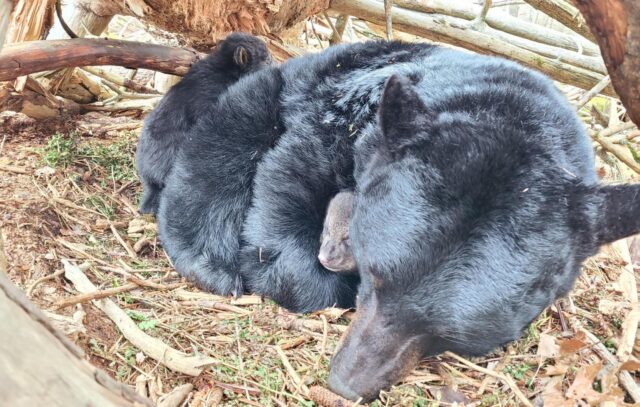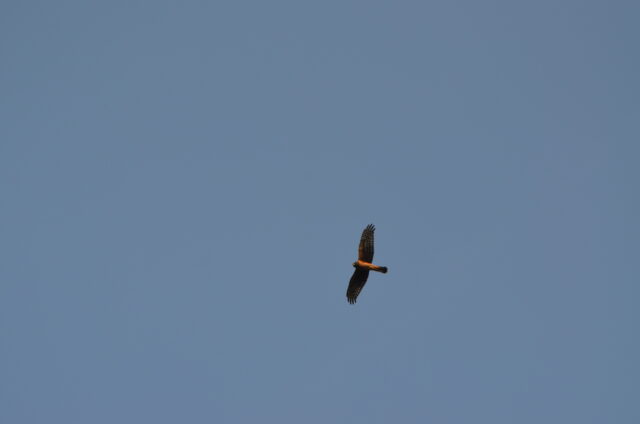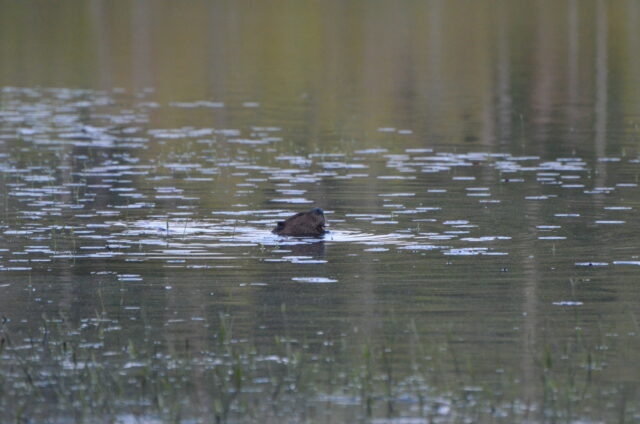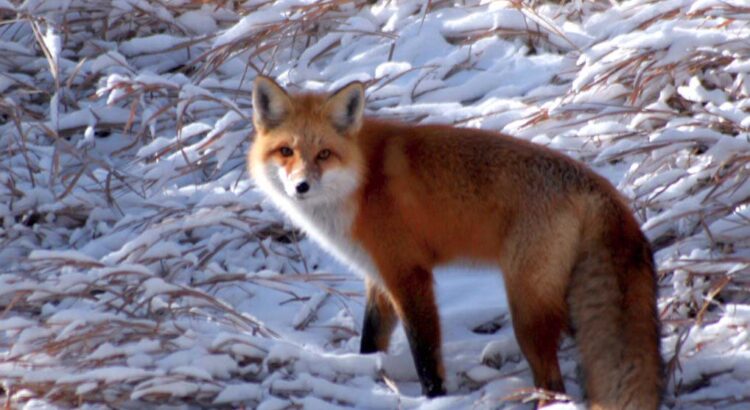Rebecca Durinick, SCA Interpretive Ranger
Come winter time, animals only have a couple strategies to deal with the cold. The three main methods are to leave (migrate), sleep (hibernate), and adapt (metabolism, insulation, etc.). In this blog post, we will discuss some of the costs and benefits of these strategies. New Hampshire has a range of animals that have a unique way of handling the winter months.

Hibernation
The first thing that comes to mind when you think of hibernation is probably the American Black Bear (Ursus americanus). It is a classic example that seems the exception instead of commonplace for animals. However, several animals enter a state of dormancy called torpor. In the desert, animals will enter estivation that helps to protect the animal from the heat. In colder climates like the Northeast, hibernation is induced by winter weather.
Food Storage
To survive hibernation, animals will have to put on weight and cache some of their food. This can mean scavenging for many months. Black bears and woodchucks (Marmota monax) will double their body weight to prepare for winter. Chipmunks (Tamias striatus) will gather seeds into their burrows for when they have periods of activity. Chipmunks can store hundreds of seeds!
Reduced Activity
During hibernation, animals will reduce their activity even including their heart and breath rate. Woodchucks are a great example of this. A woodchuck will reduce its heart rate from 105 bpm to 4 bpm! Some amphibians like the wood frog and gray tree frog have adapted to survive the winter with no movement and with little to no breathing or blood flow. They accomplish this by storing urine and producing glucose from their liver. A combination of glucose and urine acts as an antifreeze that prevents the cells from freezing. In-between the cells will freeze solid.
Dens and Burrows
A hibernating animal will also choose a location out of the elements. Bats will seek out caves and mines to live in over the winter. Chipmunks will dig out a burrow with a couple of chambers for food and sleeping in. Bears will make dens in brush piles and rock crevices that provide a windbreak for them. Some amphibians like the wood frog will hide under leaf litter for warmth. Most frogs will burrow down deep into the earth for the winter. These sites may add protection from the elements, insulation, and concealment from predators.

Migration
Another choice for more mobile animals is to migrate to warmer areas with more food available. Birds and bugs are the most common migrators. Winter has fewer food sources for animals to take advantage of. As we mentioned with hibernation, food is essential to keeping warm. Food is essential to provide energy. Even shivering costs essential energy. Migration takes a lot of energy to move to a more habitable location for the summer, but taking the flight is shorter than withstanding the long cold winter months. That’s why many people also choose to move for the seasons.
Raptor Migration
Raptors have less active prey which causes them to move south. Not all raptors migrate though. You may see Red-tailed Hawks (Buteo jamaicensis) that live residentially in New Hampshire. Some of the Red-tailed Hawks will have to relocate due to limited resources. Moving towards the southern US reduces the snowpack size increasing the prey available. Broad-winged Hawks (Buteo platypterus) have a longer journey. Broad-wing hawks will migrate all the way down to South and Central America looking for amphibians and lizards to eat. Frogs and small mammals won’t be as active over the winter forcing the Broad-winged Hawk to Migrate. Broad-winged Hawks move in large groups using thermals to migrate southward. These large groups are called “kettles” and are a fantastic spectacle at any hawk watch. Thermals are sections of rising warm air that help the Hawks gain lift with less energy cost. You can see a kettle at the Raptor observatory at Miller State Park. The peak Broad-winged Hawk migration is generally on the 14th and 20th of September. The Harris Center uses hawkcount.org to record their count and can give you an idea of when they have started to migrate.
Monarchs Moving to Mexico
Insects are also migrating to escape the cold. One of the most fascinating is the Monarch Butterfly (Danaus plexippus). Monarchs take the arduous trip up to take advantage of the milkweed. These butterflies take three generations to migrate up to New England. Each generation only lives for 2-3 weeks. The 4th or 5th generation will take the trip all the way down to Mexico. To do this they have to be really strong, and this last generation is called the super generation. These monarchs live longer and are stronger than their parents. The only problem is there is no one to show them the way. Luckily their parents have passed on a map in their genetics. Monarchs have a solar compass that guides them down to the trees of Mexico. Their antennae can tell the time and their eyes are polarized to let them travel on cloudy days. The super monarch lacks the aging hormone on their trip down to Mexico where they will overwinter. In the spring they will start to produce this aging hormone and begin the trip north and start the entire process again.

Adapting to the Cold
The animals that stay have adapted to the cold. Many of our mammals have a thick fur coat. This insulating layer allows them to stay warm. The fur of a beaver (Castor canadensis) is extremely dense and oily. The oily hair adds water resistance where other animals like the fox will lose loft if their fur gets wet. Birds like the Red-tailed hawks will have feathers that work similarly to fur. Feathers and fur provide a layer of trapped air. This air then stays heated by the animal. Another common weather evolutionary adaptation is to have reduced extremities. This lowers the surface area exposed to cold air. This is common in animals like the Arctic fox (Vulpes lagopus) where you can see the ears are smaller than foxes in other areas. The Fennec fox (Vulpes zerda) lives in the desert and has larger ears.
References
https://www.science.org.au/curious/hibernation
https://www.discoverwildlife.com/animal-facts/torpor-vs-hibernation-sleep/
https://forestsociety.org/something-wild/what-winter-torpor
https://www.nhaudubon.org/wood-frogs/#:~:text=Wood frogs spend the winter,strategy for coping with freezing.

